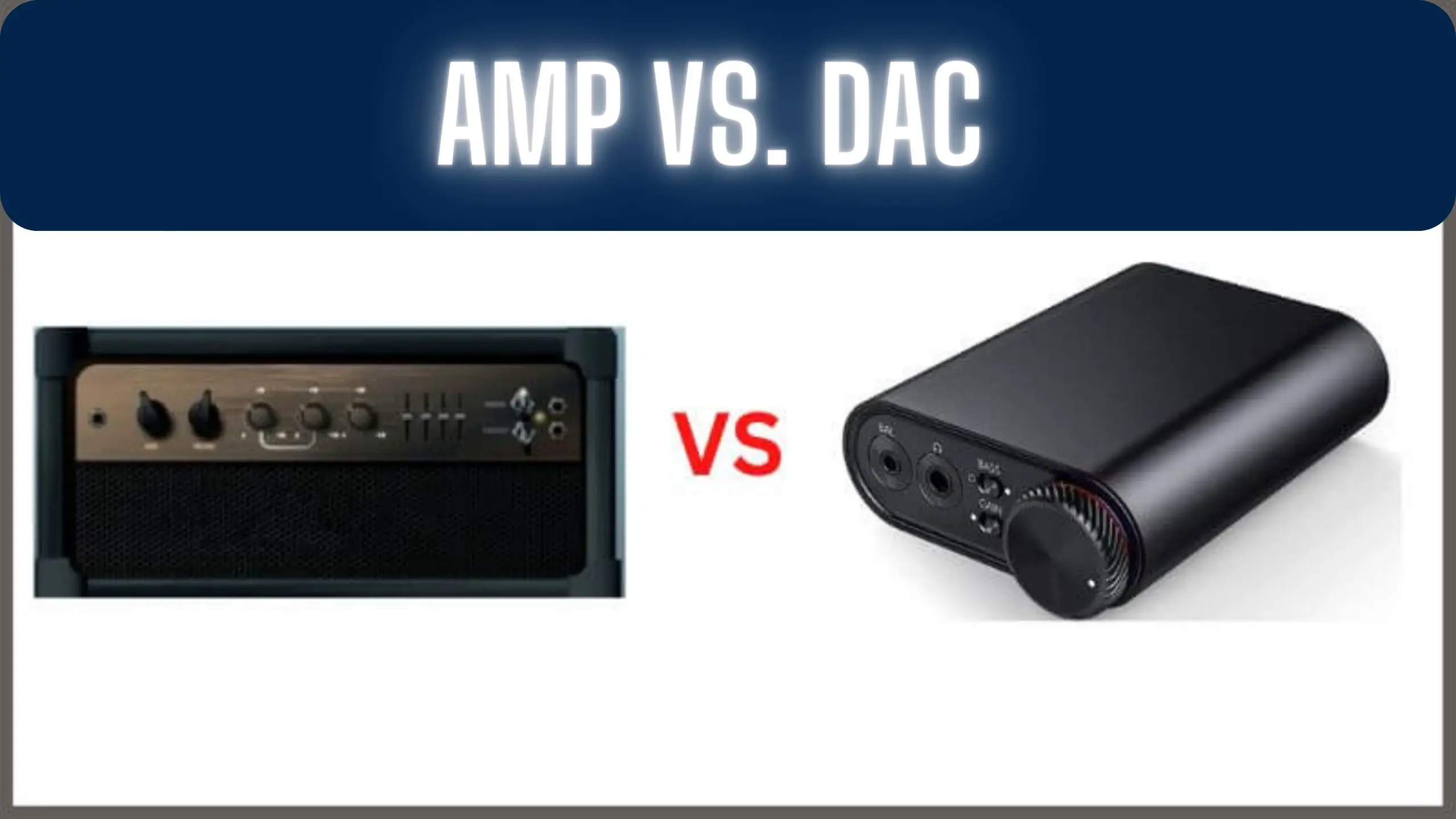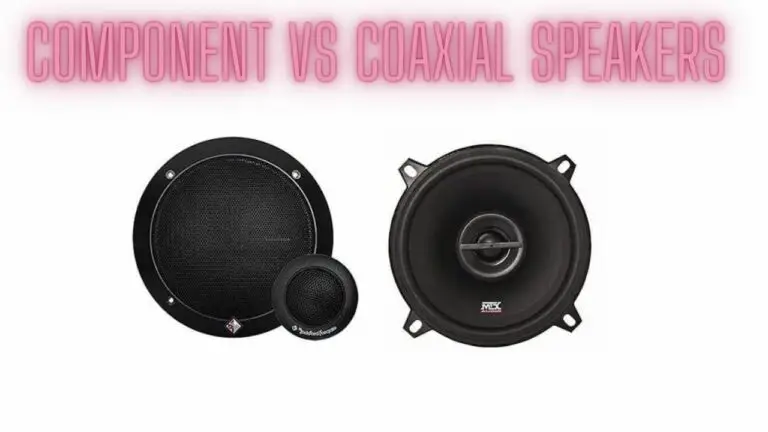AMP vs. DAC: Unraveling the Differences in Audio Enhancement
Introduction
Amplifiers (AMP) and Digital-to-Analog Converters (DAC) are fundamental components in audio systems, each playing a crucial role in the processing and reproduction of sound. Understanding their functionalities and differences is essential for anyone interested in audio technology, whether for professional audio engineering, consumer electronics, or hobbyist pursuits.
In this comparison, we delve into the core principles of amplifiers and DACs, exploring how they work, their respective applications, and the distinctions between them. By examining their technology, functionality, and real-world use cases, we aim to provide insights into their roles within audio systems and their impact on sound quality and overall performance.
Technology and Functionality
Amplifiers (AMP) and Digital-to-Analog Converters (DAC) serve distinct yet complementary functions within audio systems, each contributing to the conversion, processing, and amplification of audio signals.
Amplifier (AMP):
- How Amplifiers Work:
- Amplifiers are electronic devices that increase the amplitude (voltage, current, or power) of an audio signal without significantly distorting its waveform.
- They accomplish this by taking a low-power input signal and boosting it to a higher-power output signal, which can then drive speakers or headphones to produce sound.
- Amplifiers operate in different classes (e.g., Class A, Class AB, Class D) depending on their circuit design and efficiency characteristics.
- Types of Amplifiers:
- Class A Amplifiers: Known for their high linearity and low distortion, Class A amplifiers conduct current throughout the entire input waveform cycle, even when there is no audio signal, resulting in high power consumption and heat generation.
- Class AB Amplifiers: Combining the efficiency of Class B amplifiers with the linearity of Class A amplifiers, Class AB amplifiers conduct current for more than half but less than the full input waveform cycle, offering a balance between power efficiency and audio fidelity.
- Class D Amplifiers: Also known as digital amplifiers, Class D amplifiers use pulse-width modulation (PWM) to encode audio signals into high-frequency square waves, which are then filtered and amplified, resulting in high efficiency and minimal heat dissipation.
Digital-to-Analog Converter (DAC):
- How DACs Work:
- Digital-to-Analog Converters (DACs) convert digital audio signals into analog waveforms that can be amplified and played through speakers or headphones.
- They accomplish this by taking binary digital signals (zeros and ones) and converting them into continuous analog voltage or current signals that represent the original audio waveform.
- DACs use various techniques such as pulse-code modulation (PCM), delta-sigma modulation, and oversampling to accurately reconstruct the analog signal from digital data.
- Types of DACs:
- PCM DACs: Pulse-code modulation (PCM) DACs are the most common type of DACs, converting digital audio signals into analog waveforms using techniques such as ladder DACs, sigma-delta DACs, or multibit DACs.
- Delta-Sigma DACs: Delta-sigma DACs use a technique called delta-sigma modulation to convert digital signals into analog waveforms, offering high resolution and low noise performance suitable for audiophile applications.
- Multibit DACs: Multibit DACs use multiple parallel digital-to-analog conversion pathways to improve linearity and reduce quantization noise, resulting in higher fidelity audio reproduction.
In summary, amplifiers (AMP) and digital-to-analog converters (DAC) play critical roles in audio systems, with amplifiers boosting the power of audio signals to drive speakers or headphones, while DACs convert digital audio signals into analog waveforms for amplification and playback. Understanding the technology and functionality of these components is essential for designing, optimizing, and troubleshooting audio systems for various applications, from professional audio production to consumer electronics and home audio setups.
Applications and Use Cases
Amplifiers (AMP) and Digital-to-Analog Converters (DAC) are essential components in a wide range of audio systems, serving various applications across industries and consumer markets.
Amplifier (AMP):
- Audio Reproduction:
- Home Audio Systems: Amplifiers drive speakers and subwoofers in home stereo systems, enhancing the volume and fidelity of music, movies, and other audio content.
- Professional Audio: Amplifiers power sound reinforcement systems, studio monitors, and live concert setups, ensuring clear and powerful audio reproduction in venues ranging from small clubs to large auditoriums.
- Car Audio: Amplifiers boost the output of car stereo systems, providing high-quality sound reproduction in vehicles for entertainment and communication purposes.
- Instrumentation and Measurement:
- Laboratory Equipment: Amplifiers amplify weak electrical signals from sensors, transducers, and measurement instruments, enabling accurate data acquisition and analysis in scientific research, engineering, and testing applications.
- Medical Devices: Amplifiers amplify bioelectric signals from medical sensors and electrodes, facilitating diagnostics, monitoring, and treatment in healthcare settings such as hospitals, clinics, and research laboratories.
Digital-to-Analog Converter (DAC):
- Audio Playback:
- Consumer Electronics: DACs convert digital audio signals from sources such as CD players, streaming devices, and computers into analog waveforms for playback through speakers, headphones, and other audio output devices.
- Hi-Fi and Audiophile Systems: High-quality DACs are used in hi-fi audio systems and audiophile setups to ensure accurate digital-to-analog conversion and pristine audio reproduction, catering to discerning listeners who demand the highest fidelity.
- Professional Audio Production: DACs are essential components in digital audio workstations (DAWs), audio interfaces, and studio monitors, providing accurate monitoring and playback capabilities for recording, mixing, and mastering audio content.
- Digital Signal Processing:
- Telecommunications: DACs convert digital audio signals in telecommunications equipment such as telephones, VoIP systems, and communication networks, enabling voice transmission and data communication over analog channels.
- Signal Generators: DACs generate analog waveforms from digital signals in signal generators, function generators, and waveform synthesizers, used in electronics testing, calibration, and waveform generation applications.
In summary, amplifiers and DACs find applications in a diverse array of audio systems, ranging from consumer electronics and home audio setups to professional audio production, instrumentation, and telecommunications. These components play critical roles in enhancing sound quality, driving audio output devices, and enabling accurate digital-to-analog conversion for various audio applications and use cases across industries and consumer markets.
Comparison of Hardware
Amplifiers (AMP) and Digital-to-Analog Converters (DAC) are integral components of audio systems, each contributing to the reproduction and processing of sound signals. When comparing their hardware aspects, several key factors come into play:
Design and Components:
- Amplifiers (AMP):
- Amplifiers feature various components such as transistors, operational amplifiers (op-amps), capacitors, and resistors arranged in specific configurations based on their circuit design (e.g., Class A, Class AB, Class D).
- The design of amplifiers varies based on factors such as power output, efficiency, distortion characteristics, and intended application (e.g., consumer audio, professional audio, instrumentation).
- Amplifiers may incorporate additional features such as tone controls, equalization circuits, and protection mechanisms to optimize performance and protect connected devices.
- Digital-to-Analog Converters (DAC):
- DACs consist of digital processing components such as digital-to-analog conversion chips, filters, and clock circuits that convert binary digital signals into analog waveforms.
- DACs may employ different architectures and conversion techniques (e.g., PCM, delta-sigma modulation) to achieve high-resolution, low-distortion conversion of digital audio signals.
- The design of DACs influences factors such as signal-to-noise ratio (SNR), dynamic range, total harmonic distortion (THD), and jitter performance, which impact audio fidelity and quality.
Signal Processing Capabilities:
- Amplifiers (AMP):
- Amplifiers process analog audio signals by amplifying voltage, current, or power levels to drive speakers or headphones, enhancing the volume and fidelity of audio playback.
- Amplifiers may incorporate additional signal processing features such as equalization, crossover filters, and dynamic range compression to adjust frequency response, balance, and dynamics.
- Digital-to-Analog Converters (DAC):
- DACs process digital audio signals by converting binary data into continuous analog waveforms, preserving the original audio fidelity and dynamics during playback.
- DACs may include built-in features such as oversampling, interpolation, and noise shaping to improve resolution, reduce quantization noise, and enhance audio quality.
In summary, amplifiers and DACs differ in their hardware design, components, and signal processing capabilities, each serving distinct yet complementary roles in audio systems. Amplifiers amplify analog signals to drive speakers or headphones, while DACs convert digital audio signals into analog waveforms for playback. Understanding the hardware characteristics of amplifiers and DACs is essential for selecting components that meet specific audio requirements and optimize sound quality in various applications and environments.
Performance and Quality
When comparing the performance and quality of Amplifiers (AMP) and Digital-to-Analog Converters (DAC), several key factors come into play, including sound fidelity, signal-to-noise ratio (SNR), and dynamic range.
Amplifier (AMP):
- Sound Fidelity:
- Amplifiers influence the sound fidelity by amplifying the audio signal without introducing significant distortion or coloration. High-quality amplifiers reproduce the input signal faithfully, preserving the original dynamics, tonal balance, and spatial characteristics of the audio source.
- Factors affecting sound fidelity include amplifier design, circuit topology, component quality, and power output capability. Class A and Class AB amplifiers are known for their high linearity and low distortion, while Class D amplifiers offer efficiency but may exhibit higher distortion levels.
- Signal-to-Noise Ratio (SNR):
- Signal-to-noise ratio (SNR) measures the ratio of the desired audio signal to background noise or interference introduced by the amplifier. Higher SNR values indicate better noise performance and cleaner audio output.
- High-quality amplifiers have low noise floors and high SNR values, minimizing audible noise and distortion, particularly at low volume levels or during quiet passages in the audio signal.
- Dynamic Range:
- Dynamic range refers to the difference between the quietest and loudest parts of the audio signal that an amplifier can reproduce without clipping or distortion. A wider dynamic range allows amplifiers to accurately reproduce both subtle nuances and powerful transients in the audio source.
- Amplifiers with wide dynamic ranges can handle a broad range of audio content, from soft acoustic music to explosive cinematic soundtracks, with clarity and precision, preserving details and dynamics across the entire volume spectrum.
Digital-to-Analog Converter (DAC):
- Sound Fidelity:
- DACs play a crucial role in sound fidelity by converting digital audio signals into analog waveforms with high accuracy and resolution. High-quality DACs faithfully reproduce the original audio signal, minimizing quantization errors and distortion.
- Factors influencing sound fidelity include DAC chip architecture, digital filtering algorithms, sampling rate, and bit depth. Premium DACs use advanced oversampling, interpolation, and noise shaping techniques to achieve superior audio reproduction.
- Signal-to-Noise Ratio (SNR):
- Like amplifiers, DACs also have signal-to-noise ratio (SNR) specifications that indicate their noise performance. Higher SNR values imply lower noise levels and better audio clarity, particularly in quiet or low-volume passages.
- High-end DACs feature low noise floors and high SNR values, providing clean and transparent audio reproduction with minimal background noise or interference.
- Dynamic Range:
- DACs contribute to dynamic range by accurately reproducing the full range of audio amplitudes present in the digital signal. Premium DACs offer wide dynamic ranges, enabling faithful reproduction of both subtle details and transient peaks in the audio source.
- Wide dynamic range DACs preserve the dynamic contrasts and transient impact of the original audio content, delivering a lifelike listening experience with exceptional clarity and realism.
In summary, both amplifiers and DACs play crucial roles in audio reproduction, influencing sound fidelity, noise performance, and dynamic range. High-quality amplifiers and DACs reproduce audio signals faithfully, with minimal distortion, noise, or coloration, ensuring accurate playback of the original audio content with clarity, precision, and dynamic impact. Understanding the performance characteristics and quality metrics of amplifiers and DACs is essential for selecting components that meet the requirements of specific audio systems and applications, from consumer electronics and home audio setups to professional audio production and audiophile systems.
Integration and Compatibility
Amplifiers (AMP) and Digital-to-Analog Converters (DAC) vary in their integration capabilities and compatibility with different audio systems and devices. Understanding their integration options and compatibility considerations is essential for building versatile and interoperable audio setups.
Amplifier (AMP):
- Connectivity Options:
- Analog Inputs: Most amplifiers feature analog inputs, such as RCA (phono) or balanced XLR connectors, allowing them to accept analog audio signals from various sources, including CD players, turntables, and preamplifiers.
- Digital Inputs: Some amplifiers offer digital inputs, such as optical (Toslink) or coaxial (SPDIF) connections, enabling them to accept digital audio signals from sources such as CD players, media players, and digital audio interfaces.
- Wireless Connectivity: Modern amplifiers may include wireless connectivity options, such as Bluetooth or Wi-Fi, allowing them to stream audio wirelessly from compatible devices such as smartphones, tablets, and computers.
- Compatibility with Devices:
- Speakers: Amplifiers are compatible with a wide range of speakers, including passive speakers (requiring external amplification) and active speakers (with built-in amplifiers). Matching the amplifier’s power output and impedance rating with the speakers’ requirements is essential for optimal performance.
- Source Components: Amplifiers can be paired with various source components, including CD players, turntables, media streamers, and digital audio players, providing amplification for different audio sources and formats.
- Headphones: Some amplifiers feature headphone outputs with dedicated headphone amplifiers, allowing users to connect headphones directly to the amplifier for high-quality audio playback.
Digital-to-Analog Converter (DAC):
- Connectivity Options:
- Digital Inputs: DACs typically feature digital inputs, such as USB, optical (Toslink), or coaxial (SPDIF) connections, allowing them to receive digital audio signals from computers, media players, CD players, and other digital audio sources.
- Analog Outputs: DACs provide analog outputs, such as RCA (phono) or balanced XLR connectors, for connecting to amplifiers, preamplifiers, integrated amplifiers, or powered speakers.
- Compatibility with Devices: DACs are compatible with a wide range of audio systems and devices, including home audio systems, headphone amplifiers, digital audio workstations (DAWs), and studio monitors.
- Integration with Amplifiers:
- Standalone DACs: Standalone DACs can be integrated into audio systems alongside amplifiers, providing high-quality digital-to-analog conversion for various audio sources and devices.
- Integrated Amplifiers: Some amplifiers include built-in DACs, combining amplification and digital-to-analog conversion functionalities in a single unit. Integrated amplifiers simplify system setup and wiring while offering high-quality audio playback.
Compatibility with Audio Formats:
- Both amplifiers and DACs support various audio formats, including uncompressed formats (e.g., WAV, FLAC), lossy formats (e.g., MP3, AAC), and high-resolution formats (e.g., DSD, MQA). Ensuring compatibility with desired audio formats is essential for seamless playback and optimal audio quality.
In summary, amplifiers and DACs offer versatile integration options and compatibility with a wide range of audio systems and devices. Understanding their connectivity options, compatibility considerations, and integration capabilities is essential for building flexible and high-performance audio setups tailored to specific needs and preferences, whether for home audio, professional audio production, or audiophile listening environments.
Market Landscape
The market landscape for Amplifiers (AMP) and Digital-to-Analog Converters (DAC) reflects a dynamic and diverse industry driven by technological advancements, evolving consumer preferences, and emerging trends in audio technology.
Amplifier (AMP):
- Consumer Electronics:
- Home Audio: Amplifiers are integral components of home audio systems, catering to a wide range of consumers seeking high-quality audio playback for music, movies, and gaming. The home audio amplifier market includes stereo amplifiers, AV receivers, and integrated amplifiers designed for various setups and preferences.
- Portable Audio: Compact and portable amplifiers cater to consumers looking to enhance the sound quality of their portable audio devices such as smartphones, digital audio players, and laptops. Portable headphone amplifiers and DAC/amp combos offer improved audio performance and driving power for headphones and earphones.
- Professional Audio:
- Live Sound: Amplifiers power sound reinforcement systems in live music venues, theaters, and events, providing high-output amplification for speakers, monitors, and subwoofers. Professional power amplifiers deliver robust performance, reliability, and efficiency for demanding live sound applications.
- Studio Recording: Amplifiers are essential components of recording studio setups, driving studio monitors, reference speakers, and headphone monitoring systems. Studio-grade amplifiers offer low distortion, high fidelity, and accurate signal reproduction for critical listening and audio production tasks.
Digital-to-Analog Converter (DAC):
- Consumer Electronics:
- Hi-Fi Audio: High-quality DACs cater to audiophiles and music enthusiasts seeking pristine audio reproduction and high-fidelity playback in home audio systems. Standalone DACs, DAC/amp combos, and integrated DACs in AV receivers and stereo amplifiers offer a range of options for audiophile-grade sound quality.
- Mobile Audio: DACs play a crucial role in enhancing the audio quality of mobile devices such as smartphones, tablets, and digital audio players. External USB DACs and portable DAC/amp combos provide improved digital-to-analog conversion and audio performance for on-the-go listening.
- Professional Audio:
- Recording and Mixing: DACs are essential components of digital audio workstations (DAWs), audio interfaces, and studio monitors used in professional audio recording, mixing, and mastering. High-resolution DACs offer accurate monitoring, signal routing, and digital audio conversion for studio-grade audio production.
- Broadcast and Multimedia: DACs are used in broadcasting, multimedia production, and post-production workflows to ensure accurate digital-to-analog conversion and high-fidelity audio playback. Broadcast-grade DACs offer low latency, high-resolution audio conversion, and compatibility with professional audio equipment.
Emerging Trends:
- High-Resolution Audio: The market for high-resolution audio (HRA) continues to grow, with consumers seeking audio components capable of reproducing studio-quality sound with greater detail and clarity.
- Wireless Connectivity: Amplifiers and DACs are incorporating wireless connectivity options such as Bluetooth, Wi-Fi, and AirPlay, enabling seamless streaming and multi-room audio playback from mobile devices and networked audio sources.
- Integrated Solutions: Manufacturers are offering integrated solutions that combine amplification, digital-to-analog conversion, streaming capabilities, and room correction technologies in single units, providing convenience and versatility for consumers seeking all-in-one audio solutions.
In summary, the market landscape for amplifiers and DACs encompasses a wide range of consumer electronics and professional audio products catering to diverse applications and preferences. With advancements in technology and growing demand for high-quality audio experiences, the market continues to evolve, offering innovative solutions and cutting-edge audio technologies for enthusiasts, professionals, and consumers alike.
Challenges and Limitations
Despite the advancements in technology and the growing demand for high-quality audio experiences, Amplifiers (AMP) and Digital-to-Analog Converters (DAC) face several challenges and limitations that impact their adoption, performance, and integration in audio systems.
Amplifier (AMP):
- Power Efficiency: Traditional Class A amplifiers are known for their high fidelity but suffer from low power efficiency and heat dissipation, resulting in energy inefficiency and increased operating costs.
- Heat Management: Amplifiers generate heat during operation, especially Class A and Class AB amplifiers, requiring adequate heat management solutions such as heat sinks, cooling fans, and ventilation to prevent overheating and component damage.
- Size and Form Factor: High-power amplifiers can be bulky and heavy, requiring ample space and physical support for installation, particularly in home audio setups and professional audio installations.
- Compatibility Issues: Amplifiers may face compatibility issues with speakers and audio sources due to mismatched impedance, power requirements, and signal levels, leading to suboptimal performance and potential damage to equipment.
Digital-to-Analog Converter (DAC):
- Digital Interface Limitations: DACs rely on digital audio interfaces such as USB, optical, and coaxial connections to receive digital audio signals, which may introduce compatibility issues, latency, or signal degradation depending on the quality of the interface and cable.
- Clock Jitter: Clock jitter, caused by timing inaccuracies in digital audio signals, can degrade the performance of DACs by introducing jitter-induced distortion and timing errors, impacting audio fidelity and imaging.
- Signal Interference: DACs are susceptible to electromagnetic interference (EMI) and radio-frequency interference (RFI) from nearby electronic devices, power supplies, and wireless signals, which can degrade the signal integrity and introduce noise into the audio output.
- Resolution and Sampling Rate Limitations: DACs have inherent limitations in resolution and sampling rate, affecting their ability to accurately reproduce high-resolution audio formats and maintain fidelity in complex audio signals with rapid transients and dynamic contrasts.
Market Challenges:
- Price and Affordability: High-quality amplifiers and DACs can be expensive, limiting accessibility for budget-conscious consumers and entry-level audio enthusiasts.
- Market Saturation: The amplifiers and DAC market is saturated with numerous brands, models, and options, making it challenging for consumers to navigate and evaluate the available choices based on their specific needs and preferences.
- Technological Obsolescence: Rapid advancements in audio technology and digital audio standards may lead to obsolescence of older amplifiers and DACs, necessitating frequent upgrades or replacements to stay current with evolving audio formats and technologies.
In summary, amplifiers and DACs face various challenges and limitations related to power efficiency, heat management, compatibility, digital interface constraints, signal integrity, and market dynamics. Addressing these challenges requires ongoing innovation, technological advancements, and market strategies to improve performance, reliability, and accessibility while meeting the evolving needs of audio enthusiasts, professionals, and consumers in a dynamic and competitive audio industry.
AMP vs. DAC FAQS
What is the primary purpose of a DAC (Digital-to-Analog Converter)?
The primary purpose of a DAC is to convert digital audio signals (binary code, 0s, and 1s) into analog signals, which can then be amplified and played through speakers or headphones. DACs ensure that digital audio files can be heard in an analog format with accuracy and fidelity.
What is the main role of an AMP (Amplifier) in an audio setup?
An amplifier, or AMP, takes the analog audio signal from a DAC and increases its power, making it suitable for driving speakers or headphones. The AMP boosts the signal’s voltage and current, ensuring that the audio is audible at the desired volume level while maintaining clarity and fidelity.
Can a DAC improve audio quality even if the audio source is not of high quality?
Yes, a high-quality DAC can improve audio quality to some extent, even if the audio source is not of the highest quality. It can help reduce distortion and enhance clarity, making the most of the available audio source.
Do I need both a DAC and an AMP for my audio setup?
Whether you need both a DAC and an AMP depends on your audio equipment and preferences. Many devices, such as smartphones and computers, have built-in DACs and amps. However, audiophiles and those seeking high-quality audio may choose to invest in external DACs and amps to tailor their setup for superior audio quality and customization.
Can I use an AMP without a DAC, or vice versa?
Yes, you can use an AMP without a DAC if you have an analog audio source (e.g., a record player) or if you’re satisfied with the built-in DAC in your audio source. Similarly, you can use a DAC without an AMP if you’re sending the analog signal directly to speakers or headphones that don’t require additional amplification.
What are some common applications for DACs and AMPs?
DACs are commonly found in various devices, including smartphones, computers, audio interfaces, CD/DVD players, and dedicated standalone DAC units. AMPs are used in stereo systems, home theater setups, headphone amplifiers, integrated amplifiers, and power amplifiers.
Can external DACs and AMPs be connected to smartphones and computers for better audio quality?
Yes, external DACs and AMPs can be connected to smartphones and computers to improve audio quality. They typically connect through USB, optical, or coaxial inputs, bypassing the built-in audio components and providing a higher-quality audio experience.
Are DACs and AMPs only for audiophiles, or can casual users benefit from them as well?
Both audiophiles and casual users can benefit from DACs and AMPs. Audiophiles seek the highest audio quality and often invest in external components to achieve it. However, even casual users can appreciate the improved audio clarity and enhanced listening experience that DACs and AMPs can provide, especially when using higher-quality headphones or speakers.
Conclusion
In conclusion, while both DACs and AMPs contribute to enhanced audio quality, they serve distinct functions in the audio chain. The DAC ensures accurate signal conversion, while the AMP provides the power needed to drive audio output devices effectively. Together, they can significantly elevate your audio listening experience, whether you’re enjoying music, movies, or gaming.








